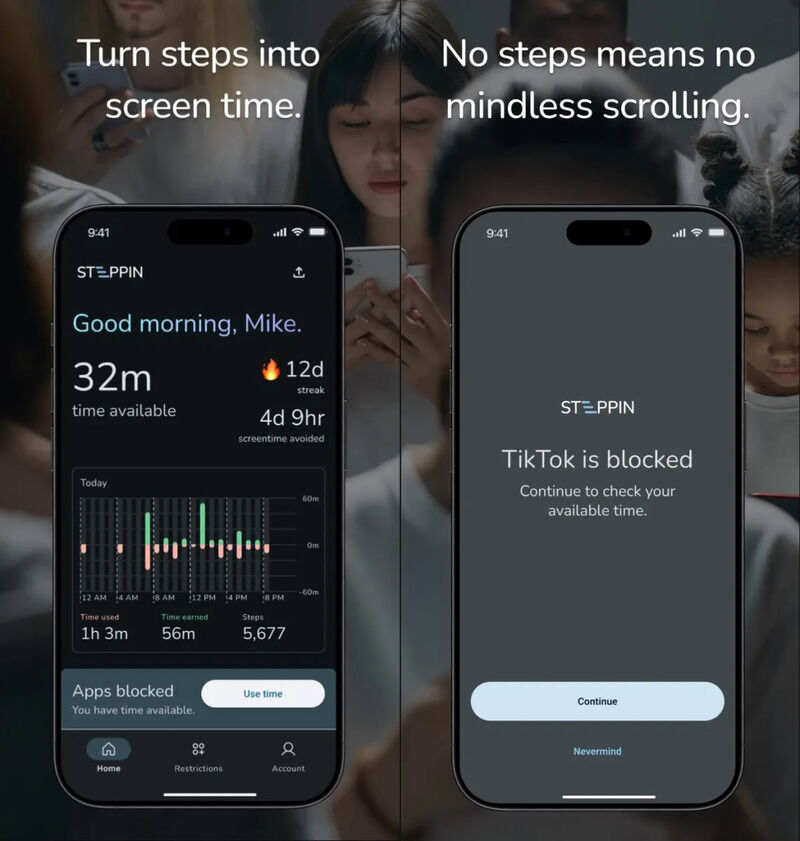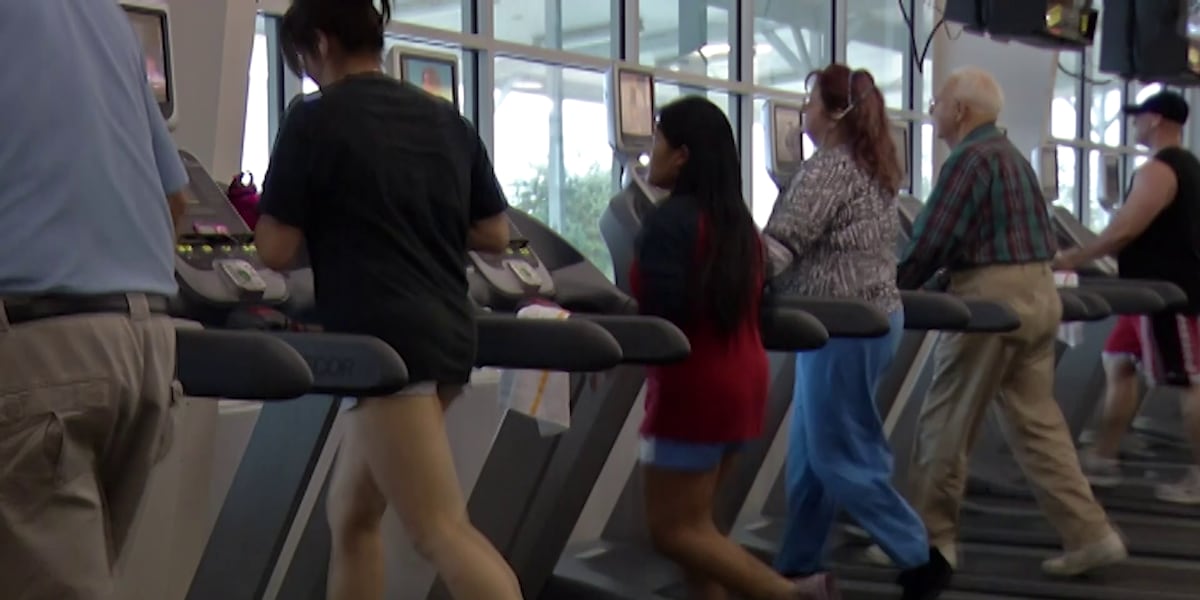Fitness
Exercise Reduces Dementia Risk

According to the Alzheimer’s Society, studies show that regular exercise can reduce a person’s risk of developing dementia by approximately 30% and for Alzheimer’s specifically that risk can be reduced by 45%. Staying physically active can help older adults maintain and improve mental function, lower the risk of developing chronic illness, and enhance flexibility and mobility. Physical activity is even more important for seniors experiencing cognitive issues like dementia or Alzheimer’s.
SilverSneakers® by Tivity Health®, the nation’s leading senior fitness program, helps Medicare eligible members stay physically, mentally and socially active. Members have access to thousands of gyms, in-person and virtual classes, and platforms designed to foster social interaction, which also becomes more important with age.
SilverSneakers Instructor, Sims Corbett, joined Pete Scalia to discuss the benefits of exercise as people age, how regular exercise is important for seniors experiencing cognitive issues and how to find a Medicare plan that includes SilverSneakers. Medicare open enrollment began on 10/15 and seniors now have an opportunity to choose a plan that offers benefits like fitness.
For more information, visit www.GetSilverSneakers.com
#WCPO9Sponsor

Fitness
Productivity-Focused Exercise Apps

The company has future plans to count more than just steps, allowing users to eventually track yoga classes and other physical activities that earn them scrolling time.
The Steppin app is now available for free on the iOS store, and the app will launch for Android users in the near future.
Image Credit: Steppin
Fitness
Gas exchange and lactate threshold are valid indicators of moderate-intensity aerobic exercise, rat study finds

Researchers at University of Tsukuba identified a previously unconfirmed gas exchange threshold in rats and demonstrated that this threshold, together with the lactate threshold, serves as an indicator of moderate-intensity exercise to determine the effectiveness of training in enhancing aerobic performance.
The study is published in Medicine & Science in Sports & Exercise. This achievement is fundamental for basic research on exercise. It will be useful for researchers in the field of health and fitness promotion as it provides a useful moderate-intensity index for rats.
During incremental aerobic exercise, there are thresholds where blood lactate levels begin to rise, and CO2 production increases rapidly relative to O2 uptake. The former threshold is termed the lactate threshold (LT), and the latter, the gas exchange threshold (GET). In humans, these thresholds are moderate-intensity exercise indices, with LT and GET at 45%–74% of the maximal oxygen uptake (VO2max). Training at or above these thresholds improves aerobic performance.
In contrast, in rats, LT has been identified, but GET is not known yet. Furthermore, it is unclear whether the rat GET and LT can be useful indicators of exercise intensity similar to the thresholds in humans.
The researchers previously established a rat model for identifying the LT during running exercise. This study aimed to simultaneously identify LT and GET by integrating this LT model with the standard human GET identification method, known as the V-slope method.
Subsequently, the relationships among the identified GET, LT, and VO2max, as well as the changes in these thresholds following aerobic training below or above the LT, were examined. The results showed that GET and LT in rats occurred synchronously at intensities ranging from 41.0% to 65.5% VO2max, and that the maximal (VO2max) and submaximal (GET, LT) aerobic capacities were enhanced only in rats that trained at intensities above the LT.
These results suggest that the GET and LT in rats are valid indices of moderate-intensity exercise in training prescription to enhance aerobic performance as in humans. The findings of this study are expected to serve as a catalyst for further research in the field of rat studies focused on exercise intensity, ultimately contributing to the advancement of human exercise prescription strategies. In particular, the noninvasive and easily identifiable nature of the GET from the exhaled gas suggests a wide range of potential applications.
More information:
Koshiro Inoue et al, Setting Treadmill Intensity for Rat Aerobic Training Using Lactate and Gas Exchange Thresholds, Medicine & Science in Sports & Exercise (2024). DOI: 10.1249/MSS.0000000000003562
University of Tsukuba
Citation:
Gas exchange and lactate threshold are valid indicators of moderate-intensity aerobic exercise, rat study finds (2025, January 15)
retrieved 15 January 2025
from https://medicalxpress.com/news/2025-01-gas-exchange-lactate-threshold-valid.html
This document is subject to copyright. Apart from any fair dealing for the purpose of private study or research, no
part may be reproduced without the written permission. The content is provided for information purposes only.
Fitness
Just 30 Minutes of Exercise Can Help Prevent Diabetes

ORLANDO, Fla. (Ivanhoe Newswire) – This time of the year, many of us vow to drop the extra pounds and hit the gym. But there’s no instant gratification. It takes time for exercise to change our bodies… or does it?
Working out, it can take days, weeks, and sometimes even months to see physical results. But new research shows exercise may actually have an immediate impact internally on your blood sugar levels.
“Exercise, I always say, is free medicine for the body,” said Alison Massey, MS, RD, CDCES, registered dietitian and owner of Flourish Nutrition Therapy & Wellness.
Italian researchers have discovered that as little as 30 minutes of physical activity can help lower blood sugar and improve insulin sensitivity. That means it can help manage and possibly prevent Type 2 diabetes. Participants in the study saw immediate glucose and insulin benefits just one hour after exercise.
“We have research that supports that lifestyle change is so powerful at reducing your risk of developing Type 2 diabetes by about 50 percent.”
Diabetes affects 537 million adults worldwide and many more may have it, but don’t know it yet. To reduce your risk, health experts recommend first losing excess weight.
“So, for somebody that’s 200 pounds, you’re looking at a 20-pound weight loss,” said Massey.
Then eat a healthy diet.
“Try to fill 50 percent of your plate with vegetables is always a good strategy,” explained Massey.
And exercising at least 30 minutes a day, five days a week.
“It does take a lot of effort and sometimes people need extra support,” Massey told Ivanhoe.
So, get an accountability buddy or a professional dietician to help. And remember, every workout counts.
In the study, researchers asked 32 participants to lightly jog for 30 minutes and they uncovered these immediate benefits one hour later.
Contributors to this news report include: Shernay Williams, Producer; Chuck Bennethum, Editor.
Subscribe to the TV5 newsletter and receive the latest local news and weather straight to your email every day.
Copyright 2025 WNEM. All rights reserved.
-
/cdn.vox-cdn.com/uploads/chorus_asset/file/25822586/STK169_ZUCKERBERG_MAGA_STKS491_CVIRGINIA_A.jpg)
/cdn.vox-cdn.com/uploads/chorus_asset/file/25822586/STK169_ZUCKERBERG_MAGA_STKS491_CVIRGINIA_A.jpg) Technology7 days ago
Technology7 days agoMeta is highlighting a splintering global approach to online speech
-

 Science5 days ago
Science5 days agoMetro will offer free rides in L.A. through Sunday due to fires
-
/cdn.vox-cdn.com/uploads/chorus_asset/file/25821992/videoframe_720397.png)
/cdn.vox-cdn.com/uploads/chorus_asset/file/25821992/videoframe_720397.png) Technology1 week ago
Technology1 week agoLas Vegas police release ChatGPT logs from the suspect in the Cybertruck explosion
-

 Movie Reviews1 week ago
Movie Reviews1 week ago‘How to Make Millions Before Grandma Dies’ Review: Thai Oscar Entry Is a Disarmingly Sentimental Tear-Jerker
-

 Health1 week ago
Health1 week agoMichael J. Fox honored with Presidential Medal of Freedom for Parkinson’s research efforts
-

 Movie Reviews1 week ago
Movie Reviews1 week agoMovie Review: Millennials try to buy-in or opt-out of the “American Meltdown”
-

 News1 week ago
News1 week agoPhotos: Pacific Palisades Wildfire Engulfs Homes in an L.A. Neighborhood
-

 World1 week ago
World1 week agoTrial Starts for Nicolas Sarkozy in Libya Election Case

















